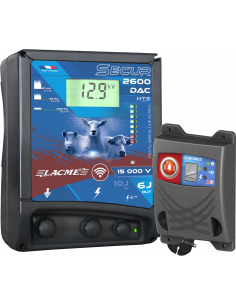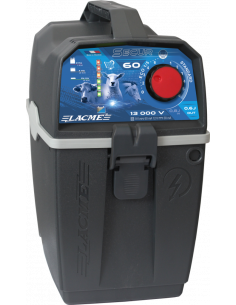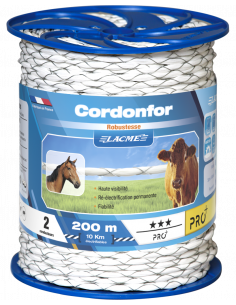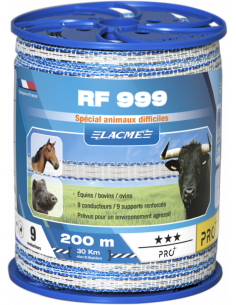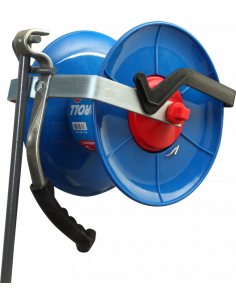Electric fence systems are used to control a wide variety of animals. Making an installation plan beforehand prevents various problems during assembly and defines the needed equipment. Before you start building your fence, follow the links in this article to see what will work best for your fencing needs.
Design and function
Electric fences are designed to complete an electrical circuit when touched by an animal. A component called a power energizer converts power into a brief high voltage pulse. One terminal of the power energizer releases an electrical pulse along a connected bare wire about once per second. Another terminal is connected to a metal rod implanted in the earth, called a ground or earth rod.
An animal touching both the wire and the earth during a pulse will complete an electrical circuit and will conduct the pulse, causing an electric shock. The pulse only lasts for a fraction of a second, so the animal only feels a very brief shock, and moves away from the electric fence immediately.
An electric fence is a psychological barrier rather than a physical one, so it relies on an animal’s respect for the fence. Most animals will receive a shock within the first week of fencing erection, and after this experience, they will avoid it.
Electric fence advantages
There are a lot of advantages that electric fences have over more conventional fencing.
- Low cost - all components are inexpensive when compared to conventional fencing.
- Easily constructed - very easy and quick to set up.
- Simplicity and flexibility - fence can be easily moved or extended.
- Safe - less likely to harm animals compared to conventional fencing.
- Long-life - due to reduced livestock pressure.
Electric fence components
For the composition of an electric fencing, you need the following components. The exact list of components is configured on a case-by-case basis.
- 1. An energizer to generate regular pulses of electrical current.
- 2. An earthing system to return the current back to the energizer.
- 3. The fence wire to conduct the current.
- 4. Insulators, that helps on the circuit continuity and reduces power loss.
- 5. Various tools that facilitate the installation and test the quality of the electric fence.

Now that you have the list of materials needed for a basic electric fence installation we can discuss a little bit about what each electric fence component is, its importance in keeping your electric fence running effectively and smoothly and what you can and can’t do if your electric fence has a weak pulse or is not working at stopping your animals.Now that you have the list of materials needed for a basic electric fence installation we can discuss a little bit about what each electric fence component is, its importance in keeping your electric fence running effectively and smoothly and what you can and can’t do if your electric fence has a weak pulse or is not working at stopping your animals.
1. ENERGIZER

What is an electric fence energizer?
The electric fence energizer is the control unit that regulates the pulse on the electric fence, It is responsible for converting the input energy (mains power, battery and solar power) to a safe and pulsed output energy that will run along your fences hot wires or live wires to contain or deter the concerned animals. The energizer’s power is expressed in Joule (corresponding to the pain perceived by the animal) and can vary from a few Milijoules for short strip grazing type fence systems to 15 Joules for very long fences affected by vegetation.
Secur 25
CHOOSING YOUR ENERGIZER: 4 QUESTIONS TO BE ASKED
- Which animal do I need to contain or deter?
- Which power source do I require?
- What are the land conditions or the vegetation levels?
- How do I calculate the required distance?


2. EARTHING SYSTEM
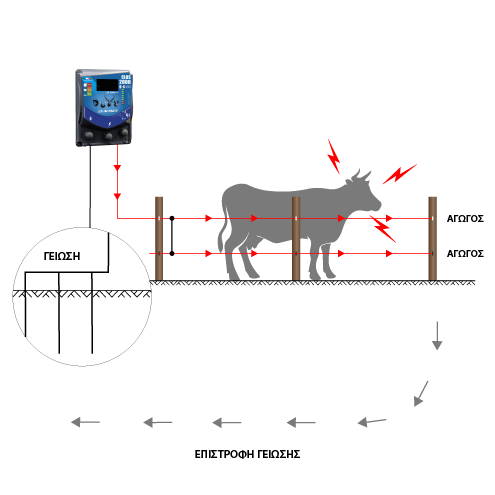
An electric fence earth stake is one of the most important parts of effective electric fence set up. The earth stake acts like an antenna for the electrical flow to run back to after it has passed through the animal's body and into the ground (as displayed in the diagram above). The more earth attraction you have in your electric fence circuit, the better the current will flow and the more shock will be received by anything that contacts the live wires. There are several factors that can improve and worsen the condition of your electric fence earth system.
THE IMPORTANCE OF A GOOD EARTH CONNECTION
3. CONDUCTORS
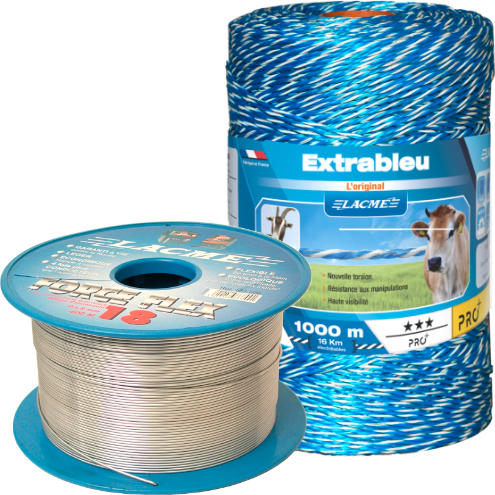
Good quality conductors (reinforced to withstand mechanical stress, ensuring effective conductivity) will carry the electrical impulses over long distances without power loss. Different materials exist, although the most conductive are copper and aluminum.
LINES : NUMBER / HEIGHT / CONFIGURATION
4. INSULATORS
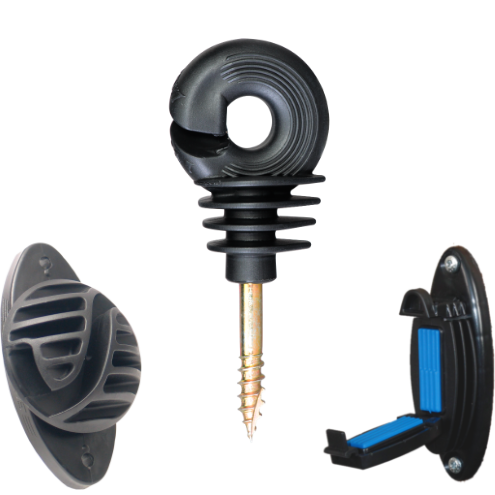
The main purpose of an electric fence insulator is to keep the live wires from touching anything conductive that would cause a short or connection to earth, resulting in an ineffective electric fence. Power needs to remain in the live wires until an animal touches the fence and an earth source, resulting in an effective shock. As the energy of electricity lost in wooden/metal posts, the high quality insulators can effectively shorten the usable distance to the fence. Electric fence insulators come in many varieties, shapes and sizes for many applications.
5. VARIOUS TOOLS
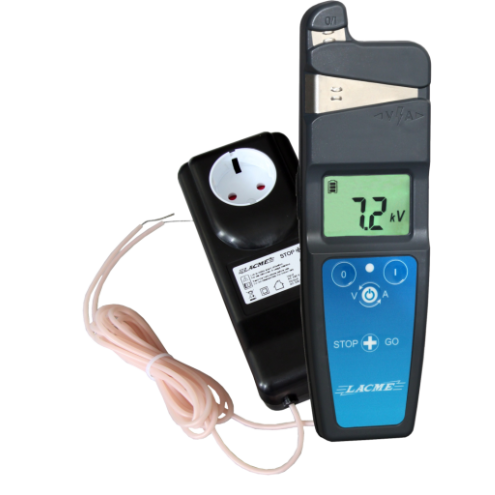
The electric fence needs to have sufficient voltage and joules to contain animals correctly. It is imperative to perform regular checks with a voltmeter. The tests need to be made not only on the fence line but also on the earth’s connection. The losses to the earth should not be superior to 500 volts for the classic and premium range energizers and 300 volts for smart energizers to perform correctly.

